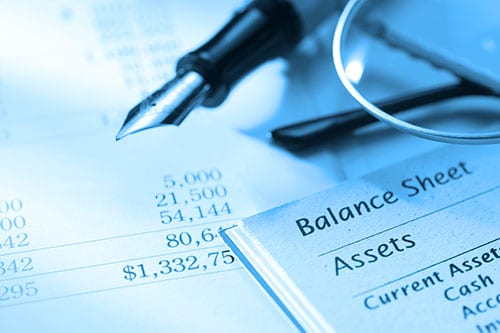Financial Statements – Understanding the Balance Sheet
The balance sheet is one of the three main financial statements of a business. The others are the income statement and the cash flow statement. The balance sheet presents a concise picture of the assets, liabilities, and the owners’ equity in the business.
Fundamental analysts focus first on the balance sheet because it is a snapshot in time of the financial status of the business in the way of assets and liabilitiesi. The information on the balance sheet tells a story for investors or lenders as to the ability of a business to fund growth or repay debt.
Business Assets
This is everything the business owns and has on hand. It can include cash, real estate, inventory, equipment, accounts receivable, and prepaid expenses. Liquid assets are cash or those quickly convertible to cash, such as stocks or easily sellable items. Illiquid assets are those not as easily or quickly convertible to cash, such as real estate and equipment.
Analysis of the balance sheet also considers assets as either current or noncurrent. Generally, assets that can be converted to cash within one year are considered as current. Current assets, especially a lot of cash, offer the business flexibility and solvency.
Liabilities
Liabilities are financial obligations of the business such as debts, accounts payable, deferred income, and customer deposits for larger businesses. As with assets, liabilities are also considered as either current or noncurrent. Current liabilities are those obligations due within one yearii.
Subtracting liabilities from assets provides a snapshot of the current value of the business, what it has to work with in the way of operations.
Owner Equity
Owner equity is the money and other assets the owner(s) have invested in the business. First, the owner invests capital to get the business started. If there are shareholders, paid-in capital represents their initial cash investment in the business. The business can also retain earnings rather than passing them to owners. These retained earnings can be used to grow the business.
Financial Ratios for Analysis
There are financial ratios that provide a quick snapshot of the health of a business when analyzing the balance sheet:
- Current Ratio – The current ratio is calculated by dividing the total assets by the total liabilities. It measures the ability of the business to apply assets to cover liabilities, especially in the short term. The higher the ratio, the more liquid the assets. Most investors prefer to see this ratio at least 2:1, meaning at least twice the assets in relation to the liabilities.
- Quick Ratio – Also called the acid-test ratio, the quick ratio looks only at the most liquid assets, those quickly convertible to cash. This is different from the current ratio which considers all assets.
- Debt to Equity Ratio – This ratio divides the total business debt by the owner/shareholder equity in the business. This only uses long-term debt, not the accounts payable. This ratio shows the ability of the business to operate using its own money.
The balance sheet is usually the first one the investors or lenders examine. The income statement and cash flow statement are supporting analytics to show operational details.
i The Main Focus Points when Analyzing a Balance Sheet, Investopedia.com

